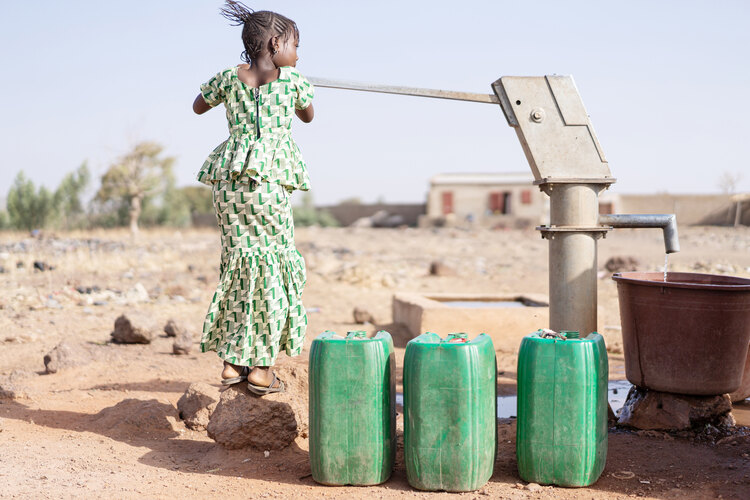Sahel heatwave impossible without human-caused climate change

Scientists believe that a deadly heatwave that struck parts of West Africa would have been impossible without human-caused climate change
By
April in the Sahel region of West Africa is never a comfortable time of year. Throughout much of the region temperatures climb to 40 degrees Celsius and frequent bands of dust and sand, emanating from massive Saharan sand storms, reduce visibility to mere metres and coat everything in a fine dust. Merely crossing a road can turn into an ordeal, as melting tarmac sticks to the bottom of shoes and pulses of heat radiating off the black tarmac can make it feel like you’re melting.
But this year was even worse than normal, with an extreme heat event in late March and early April claiming many lives in a matter of days. Scientists studying the heatwave have said that human-caused climate change is to blame and that the Sahel region will likely see more frequent and intense heat waves.
The Sahel, which is a vast band stretching roughly from northern Senegal right across the breadth of Africa to Eritrea, is a hot, dry semi-desert transition zone between the true Sahara Desert to the north and the more humid tropical regions further south. The people living in the Sahel are more accustomed than most to very high temperatures, but the scale of this latest heatwave left many people struggling to cope. Mali, Burkina Faso, Niger, Senegal, Guinea, Nigeria and Chad all recorded extreme temperatures with maximum average highs of 45° Celsius. In Kayes, Mali, the temperature reached a scorching 48.5° Celsius on 3 April, and in Burkina Faso minimum temperatures were still a sweltering 32° Celsius. In many of these countries, some of which are among the poorest in the world, power cuts occurred making it especially difficult for the population to cope with the extreme temperatures.
Even in highly developed nations with accurate and fast record keeping, the death toll from heatwaves is often underreported and not known until months after the event. However, the seriousness of this latest Sahel heatwave became apparent almost immediately when a surge in hospital admissions and deaths were reported from the Gabriel Touré hospital in Bamako, Mali between 1-4 April. The hospital recorded 102 deaths over the four-day period, which is significantly more than expected. A year earlier, in April 2023, the hospital recorded 130 deaths over the entire month. While statistics for the cause of death have not been reported, around half were over the age of 60, and the hospital reports that heat likely played a role in many of the deaths.
Immediately after the end of the heatwave, a team of scientists from Mali, Burkina Faso, Mozambique, the Netherlands, Sweden, the United States and the United Kingdom examined the heat statistics over a five-day period between 30 March 30 and 4 April (when the heat wave peaked) in two areas: one that focused on southern regions of Mali and Burkina Faso, where the heat was most extreme, and a larger area including parts of Niger, Nigeria, Benin, Togo, Ghana, Côte d’Ivoire, Mauritania, Senegal, Gambia, Guinea-Bissau and Guinea, where temperatures were widely above 40°C.
The scientists found that both daytime and nighttime heatwaves across both regions would have been impossible without human-caused climate change, which made the maximum temperatures 1.5°C hotter and the nighttime temperatures 2°C hotter for the Burkina Faso and Mali region and the five-day daytime temperatures for the wider region 1.4°C hotter.
The scientists discovered that across much of West Africa, such high daytime temperatures can be expected only about once every 30 years. However, daytime temperatures like those experienced in southern Mali and Burkina Faso occur only around once every 200 years. The team of scientists concluded that human-caused climate change is likely to make extreme heat events in the Sahel much more common, with similar heat waves becoming ten times more frequent than in today’s climate.
No comments:
Post a Comment